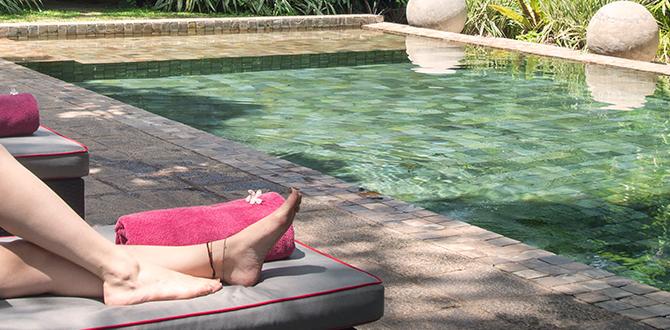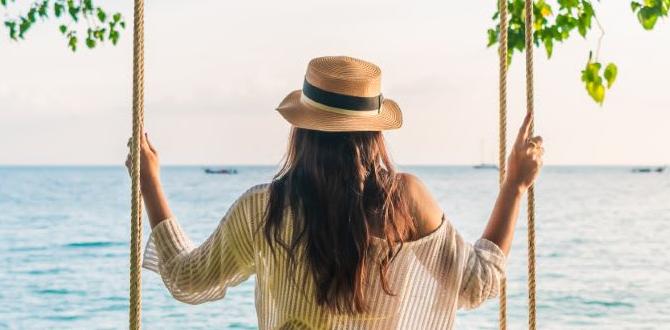Bhutan Walkable Routes & Maps: Essential Guide
Discovering Bhutan on foot is an unforgettable experience! This guide provides essential information on walkable routes and maps, helping you navigate the stunning landscapes and cultural sites with ease. We’ll cover everything from planning your treks to finding reliable map resources so you can explore Bhutan confidently.
Bhutan, the Land of the Thunder Dragon, is a place often dreamt of for its pristine natural beauty and unique culture. While many imagine grand treks, there’s a whole world of walking experiences waiting for you right within its charming towns and accessible trails. Planning to explore on foot can sometimes feel a bit daunting, especially in a new country. Where do you start? What routes are best for beginners? How do you even get a good map? Don’t worry, we’ve got you covered. This guide is designed to make your Bhutanese walking adventures simple and enjoyable, from easy strolls to more moderate explorations. Get ready to uncover the magic of Bhutan, one step at a time!
Understanding Bhutan’s Walkability
Bhutan is increasingly focusing on sustainable tourism, which naturally lends itself to exploring on foot. The country’s commitment to Gross National Happiness isn’t just about policy; it translates into a thoughtfully managed environment. This means that many of its most beautiful spots are accessible via well-maintained paths, and its towns are surprisingly pedestrian-friendly.
When we talk about “walkable” in Bhutan, it encompasses a few different types of experiences:
- Town Strolls: Exploring the heart of cities like Thimphu, Paro, and Punakha on foot. These towns are small enough to wander through, discovering local markets, monasteries, and everyday life.
- Nature Trails: Shorter, often well-marked paths that lead to viewpoints, waterfalls, or smaller temples, perfect for a few hours of exploration.
- Cultural Walks: Paths connecting significant sites, often involving moderate climbs, offering breathtaking views and cultural immersion.
- Trekking Routes: For the more adventurous, Bhutan offers multi-day treks that are exceptionally rewarding. While these are more involved, even the shorter sections can be accessed for day walks.
The infrastructure for walkers is good, especially in tourist areas. You’ll find opportunities to walk without a guide in many smaller towns and on clearly marked nature trails. However, for longer treks or more remote areas, hiring a local guide is highly recommended and often mandatory due to safety and environmental regulations. This also enhances your experience by providing cultural and historical insights.
Essential Bhutan Walkable Routes for Beginners
For travelers new to Bhutan or those who prefer gentler explorations, several routes offer a fantastic introduction to the country’s charm without requiring extensive hiking experience. These routes are generally accessible, well-maintained, and showcase diverse aspects of Bhutanese culture and nature.
Thimphu Valley Walks
Thimphu, the capital city, offers a surprisingly green and accessible environment for walking.
- Memorial Chorten Walk: This is a gentle, paved loop around the Memorial Chorten, a prominent Buddhist stupa. It’s incredibly social, with locals circumambulating and spinning prayer wheels. It’s a peaceful way to observe daily spiritual life and is accessible to everyone.
- Buddha Dordenma Hike: A moderately easy hike up to the giant Buddha Dordenma statue overlooking the Thimphu valley. The path is clear, and the ascent is manageable, rewarded with panoramic views. You can also drive part of the way and walk the rest.
- Takin Preserve Trail: A short, pleasant walk through a forested area leading to the Takin Preserve, home to Bhutan’s national animal. It’s a leisurely stroll, perfect for spotting unique wildlife in a natural setting.
Paro Valley Walks
Paro is famous for its iconic Tiger’s Nest Monastery, but it offers other delightful walking opportunities too.
- Paro Town Exploration: The main street of Paro town is perfect for a leisurely walk. You can explore local shops, visit the Paro Dzong (fortress-monastery), and walk along the Pachu River. Many guesthouses and hotels are located within easy walking distance of key attractions.
- Kyichu Lhakhang Walk: A short, flat walk to one of Bhutan’s oldest and most sacred temples. The surroundings are tranquil, and it’s a beautiful spot for a peaceful wander.
- Farmhouse Visits: Many families in the Paro valley open their traditional farmhouses to visitors. A walk to one of these can be a charming experience, often involving a short, easy walk through rice fields.
Punakha Valley Walks
With its warmer climate and fertile valley, Punakha offers beautiful, gentle walking routes.
- Punakha Dzong Walk: Access to the magnificent Punakha Dzong involves a short, flat walk across a bridge. The surrounding area is also lovely for a gentle stroll along the Mo Chhu (female river).
- Chimi Lhakhang Hike: This is perhaps the most popular beginner’s walk in Punakha. It’s a charming 20-30 minute walk through rice paddies and small villages to Chimi Lhakhang, the “temple of fertility.” The path is mostly flat and well-trodden.
- Khamsum Yulley Namgyal Chorten Climb: While this involves a climb, it’s considered a moderate and very rewarding walk. The path winds through rice fields and pine forests, leading to a stunning chorten with incredible views of the Punakha valley. It might be a bit more challenging than a simple stroll, but it’s very achievable for most.
Moderate Bhutan Walks and Short Treks
For those looking for a bit more activity and a deeper connection with nature, these moderate routes offer a fantastic balance of challenge and reward. They typically involve steeper ascents and longer durations but are still well within the reach of reasonably fit individuals.
Bumthang Valley Walks
Known as the spiritual heartland of Bhutan, Bumthang has numerous ancient temples and serene landscapes perfect for walking.
- Jakar Dzong and Surrounding Temples: Explore the “Dzong of the White Bird” and then take gentle walks to nearby temples like Kurjey Lhakhang and Tamshing Lhakhang. These walks are often through small villages and alongside prayer flags, offering a glimpse into rural life.
- Burning Lake (Tshochen Bi Tso) Walk: A more adventurous but highly rewarding walk involves descending to a cave where Guru Rinpoche is said to have meditated. The path can be steep in places, but the spiritual significance and scenic beauty are immense.
Hikes Near Paro
Beyond the world-famous Tiger’s Nest, Paro offers other captivating trails.
- Chele La Pass to Haa Valley Descent: While the Chele La Pass itself is a destination (accessible by road), you can embark on a scenic descent towards the Haa Valley. This is a longer, more challenging walk, often requiring a guide, but the rhododendron forests and panoramic views are spectacular. It showcases Bhutan’s diverse flora.
- Dzongdrakha Goemba Hike: This is a less crowded alternative to Tiger’s Nest but equally beautiful. It’s a steep but relatively short hike up to a cliffside monastery. The path is well-defined, and the views are breathtaking.
Wangdue Phodrang and Phobjikha Valley Walks
These regions offer stunning natural beauty and unique cultural experiences accessible on foot.
- Gangtey Nature Trail (Phobjikha Valley): This is a beautiful circular trail, often completed as a day hike. It meanders through pine forests, along the valley floor, and offers stunning views of the glacial valley and the Gangtey Monastery. It’s especially famous for spotting the endangered Black-Necked Cranes in winter.
- Local Village Walks (Phobjikha): Simply wandering through the scattered villages of Phobjikha allows you to experience traditional Bhutanese rural life. The landscape is vast and open, with gentle undulating terrain.
Bhutan Trekking Routes Accessible for Day Hikes
While Thailand offers extensive multi-day treks, many of these routes have sections that can be enjoyed as day hikes, providing a taste of the longer adventures without the commitment. These often require prior organization and sometimes a guide.
- Druk Path Trek (Day Section): The full Druk Path is a famous 5-day trek. However, sections near Thimphu, like the hike up to Tango or Cheri monasteries, can serve as excellent day hikes. These involve significant ascents through forests and offer beautiful mountain scenery and spiritual sites.
- Bum Dra Trek (Day Trip from Paro): This is a popular day hike from Paro, leading to a meditation cave above Paro Dzong. It involves a steep climb but offers incredible views of the valley and the monastery. It’s a challenging but rewarding day out.
Important Note: For any route described as more than a gentle stroll, especially those near trekking trails, it is highly recommended to check with your tour operator or local guides about current trail conditions, necessary permits, and safety precautions. For instance, the Druk Path Trek, while challenging as a whole, has accessible entry points.
Essential Bhutan Maps and Navigation Tools
Navigating Bhutan, whether on foot or by vehicle, can be enhanced with the right tools. While many popular tourist routes are straightforward, having a map can boost your confidence and allow for spontaneous detours.
Official Maps and Guides
Bhutan’s tourism industry is well-regulated. You’ll find that most organized tours include comprehensive itineraries and guides who are experts in navigation. For independent exploration or to supplement your guide’s knowledge, consider these:
- Bhutan Tourism Department Resources: While they may not offer detailed topographic maps for public sale, the official tourism website and information centers can provide general maps of popular areas and trekking routes.
- Tour Operator Maps: Your chosen Bhutanese tour operator will likely provide you with maps of the regions you are visiting as part of your tour package. These are usually tailored to your itinerary.
Digital Mapping Options
While internet connectivity can be spotty outside major towns, having offline maps on your smartphone is invaluable.
- Google Maps (Offline): Download the map areas for Bhutan before you leave home. You can then use it for navigation in towns and on major roads, even without a data connection. Remember that its accuracy for trails might be limited.
- AllTrails/Komoot (Limited Bhutan Coverage): These popular hiking apps sometimes have user-generated trail data. Check for Bhutan before your trip, but don’t rely on them solely, as coverage can be sparse.
- Gaia GPS / Maps.me: These apps often allow you to download detailed topographic maps and have more robust offline capabilities. Search for and download Bhutan data in high resolution before your trip.
Physical Maps and Compasses
For serious trekkers or those venturing off the beaten path, a physical map and compass are essential backups.
- Specialty Outdoor Stores: You can sometimes find detailed topographical maps of Bhutan at specialized outdoor equipment stores in larger cities like Thimphu or Paro, or order them online from international retailers that stock trekking maps.
- Reliable Compass: A good quality baseplate compass is crucial. Learn how to use it in conjunction with your map.
Navigation Tips for Bhutan
- Always Carry a Map: Even for short walks, having a map of the area can prevent confusion.
- Understand Local Signage: While not always in English, signs pointing to monasteries or towns can be helpful.
- Ask Locals: Bhutanese people are incredibly friendly and helpful. Don’t hesitate to politely ask for directions if you are unsure.
- Stay on Marked Trails: Especially in forested areas or on steeper slopes, sticking to established paths is the safest way to navigate.
- Consider a Satellite Communicator: For remote treks, a device like a Garmin inReach can be a lifesaver for emergencies.
Planning Your Walkable Bhutan Trip: Practicalities
To ensure your walking adventures in Bhutan are comfortable and stress-free, a little preparation goes a long way. This is especially true when considering personal essentials that can make a big difference.
Visa and Travel Permits
Bhutan has a unique tourism policy. All tourists (except Indian, Bangladeshi, and Maldivian nationals) must obtain a visa in advance through a registered Bhutanese tour operator. Your visa application will be processed by your tour operator once you have booked your trip.
- Minimum Daily Package: Most tourists pay a Sustainable Development Fee (SDF) of USD $100 per person per night (as of September 2023, this rate may change) plus the cost of your tour package.
- Permits for Trekking: For any multi-day treks, specific permits are required and are usually arranged by your tour operator.
- Independent Travel: While Bhutan is encouraging more flexibility, engaging with a local tour operator is still the primary way for most international travelers to visit and arrange permits for various activities, including guided walks on specific routes. Check the official Bhutan Tourism website for the most up-to-date regulations.
Packing Essentials for Walkers
Comfortable footwear is the most critical item. Beyond that, layering is key due to Bhutan’s varied altitudes and microclimates.
- Footwear: Well-broken-in hiking boots or sturdy walking shoes are a must. Consider waterproof options.
- Clothing:
- Moisture-wicking base layers
- Insulating mid-layers (fleece or down jacket)
- Waterproof and windproof outer shell
- Comfortable walking pants (avoid jeans for hikes)
- Trekking socks
- Accessories:
- Backpack (daypack for essentials)
- Water bottle or hydration reservoir
- Sunscreen, hat, and sunglasses (sun is strong at high altitudes)
- Insect repellent
- First-aid kit (including any personal medications)
- Trekking poles (optional, but helpful on descents)
Managing Personal Care Needs While Walking
Whether you’re on a gentle stroll or a more extended day hike, being prepared for personal care needs is vital for comfort and confidence.
- Hydration and Snacks: Carry plenty of water and energy-boosting snacks like nuts, dried fruit, or energy bars.
- Hygiene: Pack travel-sized wet wipes and hand sanitizer. Small, discreet pouches are ideal and can fit easily into your daypack.
- Comfort for Longer Strolls/Activities: For longer days out, or for those who need extra security and comfort, having access to discreet personal care items is important. Consider packing comfortable adult diapers or protective underwear. Brands like Depend or TENA offer quiet, absorbent options designed for everyday wear, ensuring you feel secure and dry throughout your explorations, whether you’re walking through Thimphu markets or on a moderate trail. Similarly, if traveling with children, having child diapers or pull-ups readily available in your daypack is a must for peace of mind.
- Medications: Ensure you have enough of any prescription medications you need, plus basic over-the-counter remedies for pain, allergies, or stomach upset.
Having these essentials packed allows you to focus on enjoying the incredible scenery and cultural experiences Bhutan has to offer, rather than worrying about comfort or preparedness.
Sample Itinerary Incorporating Walkable Routes
Here’s a sample 7-day itinerary that focuses on incorporating enjoyable walkable routes for a beginner-friendly Bhutan experience. This itinerary balances cultural sites with accessible nature walks.
| Day | Location | Morning Activity | Afternoon Activity | Evening |
|---|---|---|---|---|
| 1 | Paro |






